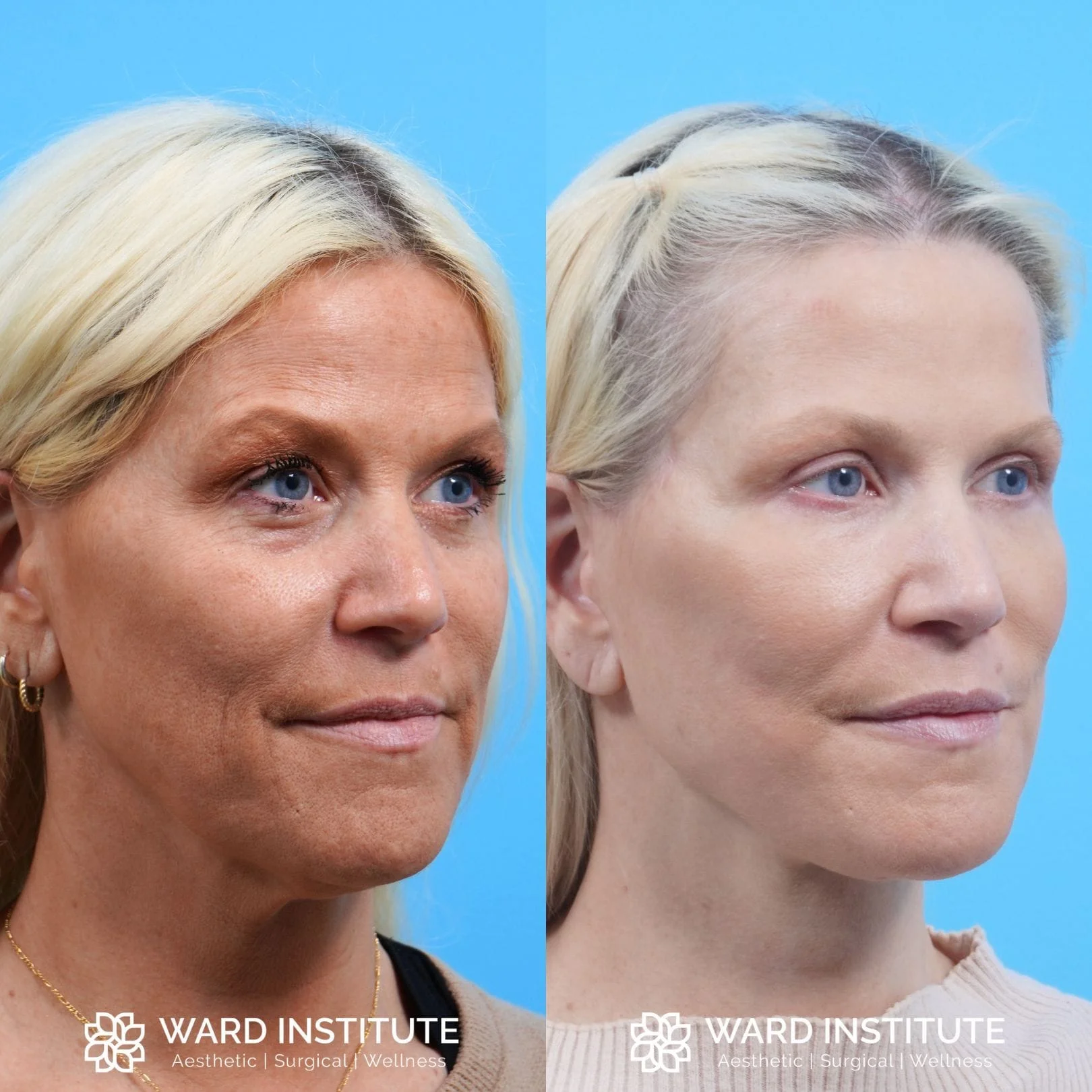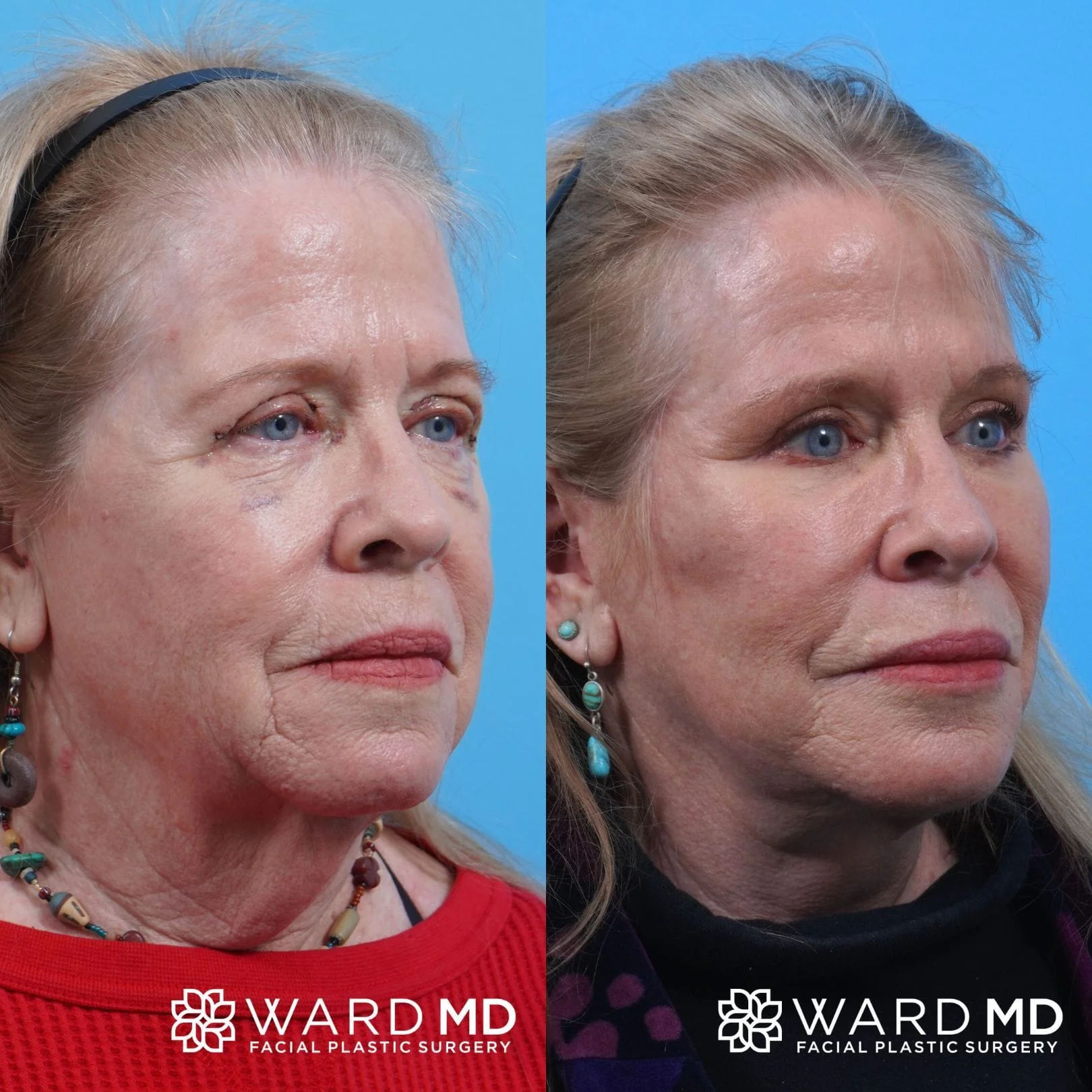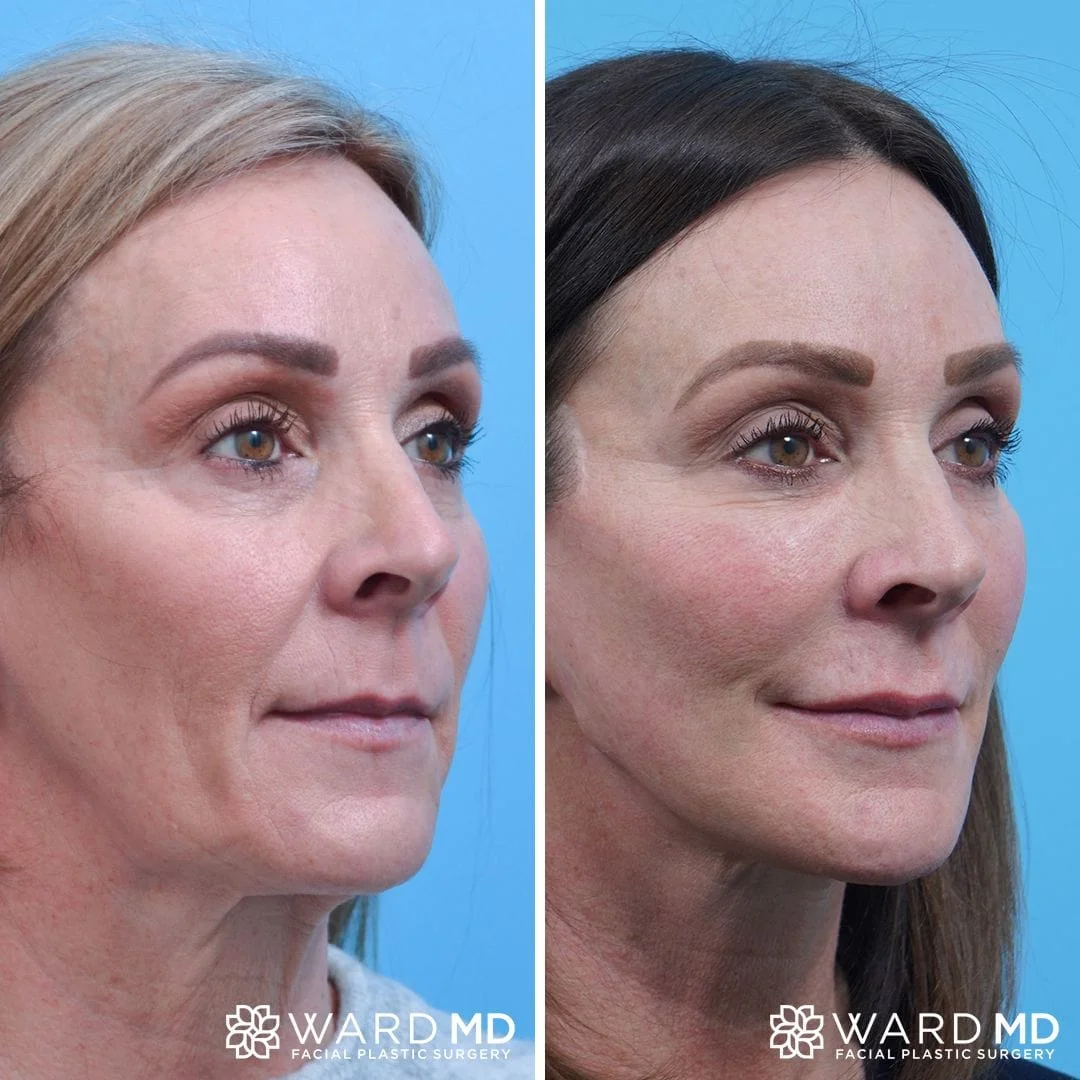Utah’s Leading Facelift Surgeons
As we grow older, our skin undergoes a series of changes that can affect our appearance. The skin may lose elasticity and firmness, causing jowls to become more prominent and the neck to become saggy. Additionally, the youthful volume in the upper cheek and mid-face regions may decrease over time. Our facelift procedure is designed to address all of these concerns and help restore a youthful, refreshed look. Our approach is focused on achieving facial harmony and creating natural-looking results that enhance your beauty.
Call Ward Institute In Cottonwood Heights Serving Salt Lake City, Utah at (801) 513-3223 to learn more about facelifts.
What is a Facelift?
A facelift is one of the most commonly requested procedures that Dr. Ward performs and he is proud to offer his signature face and neck lift, which is a safe, proven, and effective technique that gives a natural, non-operated look.
As we age, the tissues of the face and neck relax and descend. This descent of tissue results in excess tissue of the lower cheek (the jowls), a loss of the normal jawline contour, and loose skin of the face and neck. A facelift refers to a procedure that aims to lift, tighten, and restore the face and neck to its more youthful position. There are numerous variations of the facelift technique that can be employed to accomplish this goal and each technique has its pros and cons. The technique that Dr. Ward uses is tailored to the individual patient, but is, in general, designed to maximize the amount of time that the results will last. His overall philosophy is one that emphasizes a natural and non-surgical result.

Who Is An Ideal Candidate For A Facelift?
Very few people over the age of 45 wouldn’t benefit from a facelift with Dr. Ward. The degree of aging on your face and neck is a combination of genetics and a variety of other factors: how much time you’ve spent in the sun, environmental issues, personal habits, stresses, and the like. Generally, a facelift rejuvenates the mid-to-lower face and neck.
If you can relate to these characteristics on your face, a facelift with Dr. Ward could be a good option:
- You have mid-face sagging
- You have deep creases under your eyes
- Your have deep nasolabial folds
- Jowls have formed on your jawline
- You have fatty, sagging areas just below your cheekbones
- You have loose skin, wrinkles, vertical cords, and fatty neck tissue
Facelift Procedure
Prior to the procedure, you will have a pre-operative history and physical exam performed to ensure that there are no health concerns prior to your procedure. You will be given instructions on what to do before, during, and after the day of surgery and you will be given prescriptions for medications that you will need to take after the procedure.
In general, you should avoid anything with aspirin, ibuprofen, or any other medication, such as Advil, Motrin, any blood thinners, some herbal supplements, etc., for 3-4 weeks prior to the procedure and 2 weeks after the procedure. This helps reduce the bleeding during the procedure and the degree of bruising that you will have after the surgery.
The procedure will be performed in an operating room under an anesthetic, if needed, that is designed to maximize the safety of the procedure, ensure your ultimate comfort during the procedure, and minimize your recovery and get you back on your feet and back to normal life as soon as possible. Unless there are other complicating medical issues that you have, the procedure is always performed as an outpatient surgery allowing you to avoid staying overnight in the hospital and go home and recover.
For our out of town patients, special arrangements can be made for you to stay overnight with medical oversight.
How Long Does A Facelift Procedure Take?
This is a tough question to answer in a broad sense, because each case is typically individualized. We typically plan on about four hours for a routine facelift and neck lift. However, there have been cases that have gone as quickly as one and a half hours and others that have taken six hours. I do not think that a surgeon who takes longer is a safer or better surgeon. In fact, in my experience, often the surgeons who take longer to complete a surgery take longer for the simple reason that they do not perform the procedure very often.
Recovery Process
After surgery, you will have a dressing on the face that helps decrease the swelling and bleeding from the procedure. This is usually removed by our staff 24-72 hours after surgery, depending on the patient. You will also come into the office to have sutures removed 6-10 days after the procedure. We will then see you at one month and then every few months afterward so we can follow your progress and ensure you are healing properly.
Bruising may occur, especially on the cheeks, the neck, and under the eyes. This usually goes away by around a week but may persist for about two weeks. Your cheeks, eyelids, and neck will be swollen. The majority of the swelling will subside in the first few weeks: however, there can be swelling that can last for several months. Patients can return to work whenever they feel up to it. For some patients, that might be 3 days after surgery; for other patients, it might be 10-14 days. We usually like our out of town patients to plan to stay for one week after surgery to ensure the face is healing properly before you travel home.
In the weeks and months following surgery, we will closely monitor your healing. This is extremely important, because we will need to monitor for any unusual scar tissue that may develop. If these changes occur, we will be able to treat them appropriately.
The final thing to expect after surgery is an experience that will leave you happier than you were before the surgery! We aim to make every part of the experience as pleasant as possible and are confident you will be glad you had your procedure performed.

FACELIFT RESULTS
Results From A Full Facelift And Mini Facelift
The changes made by Dr. Ward during your facelift are permanent. Excess skin is removed and future sagging won’t recur to the same degree. Muscles are repositioned permanently, elevating the skin and support tissues. The more involved the method used, the longer your results will endure. A full facelift provides the most dramatic results and these can last for 10-15 years. Mini facelifts deliver more subtle change and usually last up to five years. With any facelift technique, your face will still age, but it will age from a younger starting point.
TESTIMONIALS

FACELIFT FAQ
Like any surgical procedure, a facelift carries certain risks and potential complications. While serious complications are rare, it's important to be aware of the following:
Bleeding: Excessive bleeding during or after surgery can occur. Your surgeon will take precautions to minimize this risk, and it can usually be managed with proper care.
Infection: Infections can develop after surgery. Your surgeon will provide instructions on how to care for the incision sites and prevent infection. If an infection does occur, appropriate treatment will be prescribed.
Poor wound healing: In rare cases, poor wound healing may occur, leading to delayed healing, widened scars, or skin necrosis (tissue death). Your surgeon will provide instructions on wound care and monitor your healing progress.
Nerve injury: Temporary or, in rare cases, permanent nerve injury may occur during the surgery, leading to altered sensation or muscle weakness in the face. Your surgeon will take precautions to minimize this risk.
Asymmetry or dissatisfaction with results: While every effort is made to achieve symmetrical and satisfying results, there is a possibility of slight asymmetry or dissatisfaction with the outcome. Communication with your surgeon regarding your expectations is crucial to ensure realistic and achievable goals.
Hairline distortion: In some cases, the incisions made during a facelift can lead to temporary or permanent hairline changes. Your surgeon will discuss the placement of incisions and potential hairline effects during the consultation.
It's important to choose a qualified and experienced plastic surgeon to minimize these risks and ensure a safe procedure. They will discuss these potential complications with you during the consultation and provide detailed pre-operative and post-operative instructions to help mitigate them.
By following your surgeon's guidance and attending all necessary follow-up appointments, you can optimize your chances of a successful facelift with minimal complications.
The Consultation
The consultation is the chance for you and your surgeon to meet and get to know each other. This relationship is important for several reasons. You should feel comfortable with your surgeon to ensure that you are on the same page before surgery and that you will feel comfortable voicing any concerns or questions before and after the surgery.
Dr. Ward will evaluate your neck and talk to you about your desired results. He will give you honest and realistic expectations and inform you of any potential risks involved. These risks can vary based on each individual person so it is important to be honest and upfront during your consultation. Risks associated with a neck lift include bleeding, infection, swelling, scarring, nerve damage (loss of sensation or facial weakness), poor cosmetic result, bruising, amongst others. These risks are all uncommon, but are important for patients to know about prior to surgery. Our aim is to decrease the probability of each of these complications from happening and will do whatever we can to prevent them.






